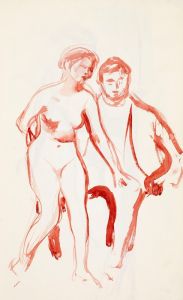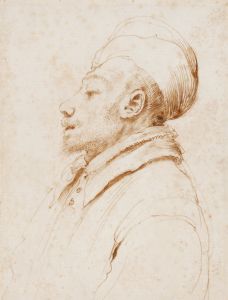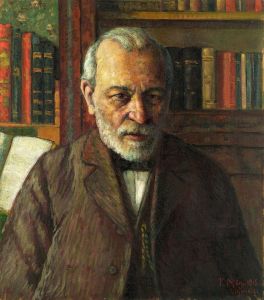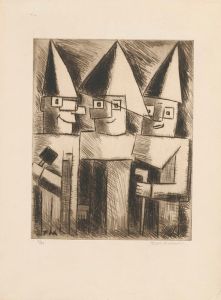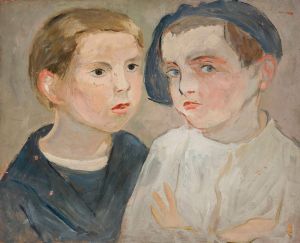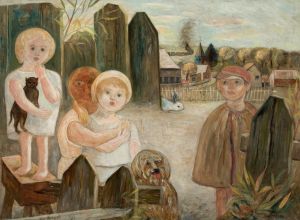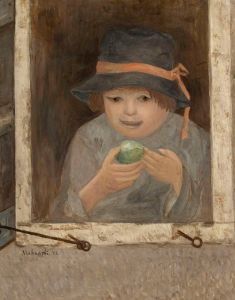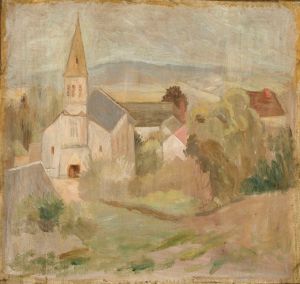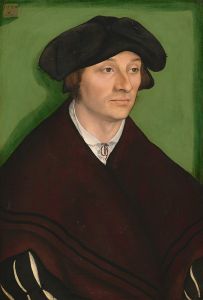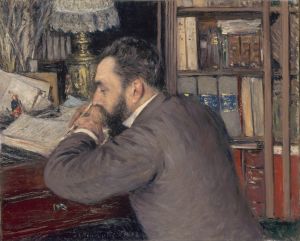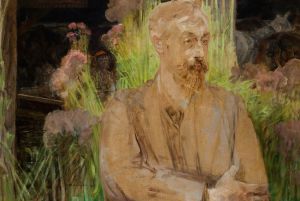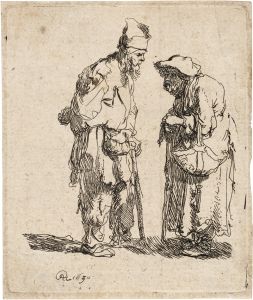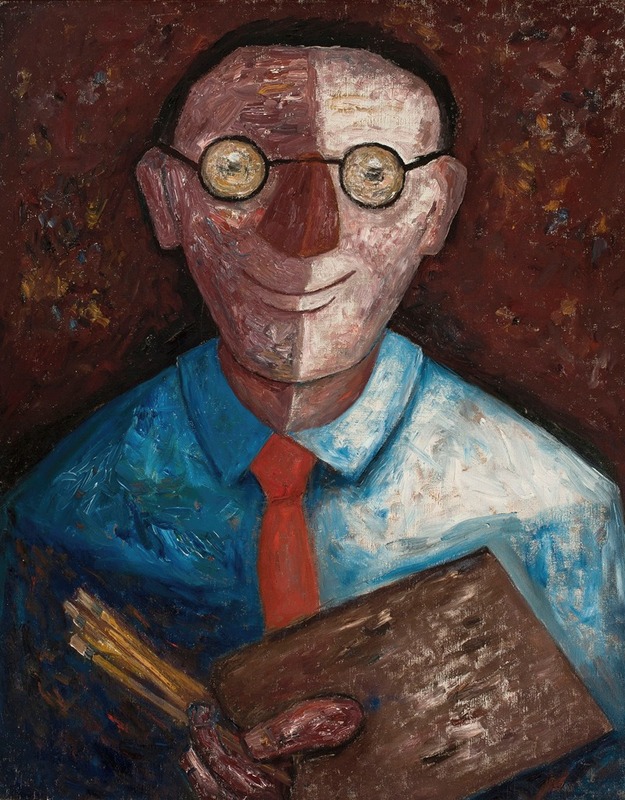
Portrait of a man with a palette
A hand-painted replica of Tadeusz Makowski’s masterpiece Portrait of a man with a palette, meticulously crafted by professional artists to capture the true essence of the original. Each piece is created with museum-quality canvas and rare mineral pigments, carefully painted by experienced artists with delicate brushstrokes and rich, layered colors to perfectly recreate the texture of the original artwork. Unlike machine-printed reproductions, this hand-painted version brings the painting to life, infused with the artist’s emotions and skill in every stroke. Whether for personal collection or home decoration, it instantly elevates the artistic atmosphere of any space.
Tadeusz Makowski was a Polish painter known for his unique style that combined elements of Post-Impressionism and Cubism. Born in 1882 in Oświęcim, Poland, Makowski initially studied classical philology at the Jagiellonian University in Kraków before pursuing his passion for art at the Academy of Fine Arts in Kraków. Under the tutelage of prominent artists like Józef Mehoffer and Jan Stanisławski, he honed his skills and developed a distinct artistic voice.
Makowski moved to Paris in 1908, where he became part of the vibrant artistic community that included figures like Pablo Picasso and Georges Braque. The influence of Cubism is evident in his work, although Makowski's style remained uniquely his own, characterized by a whimsical and often childlike quality. His paintings frequently depicted scenes of everyday life, children, and rural landscapes, rendered with a sense of simplicity and innocence.
"Portrait of a Man with a Palette" is one of Makowski's notable works, showcasing his distinctive approach to portraiture. The painting features a man holding a painter's palette, a common symbol of the artist's craft. Makowski's use of color and form in this piece reflects his Cubist influences, with geometric shapes and a muted color palette that create a sense of depth and texture. The subject's face is rendered with a sense of abstraction, yet it retains a recognizable human quality, a testament to Makowski's ability to blend realism with abstraction.
The painting is an example of Makowski's exploration of the artist's identity and the act of creation. By depicting the subject with a palette, Makowski not only highlights the tools of the trade but also suggests a deeper connection between the artist and his work. The composition is carefully balanced, with the palette serving as a focal point that draws the viewer's eye and emphasizes the subject's role as a creator.
Makowski's work, including "Portrait of a Man with a Palette," is celebrated for its ability to convey emotion and narrative through a minimalist approach. His paintings often evoke a sense of nostalgia and wonder, inviting viewers to engage with the world through a lens of simplicity and beauty. Despite his relatively short life—Makowski passed away in 1932—his contributions to the art world have left a lasting impact, and his works continue to be studied and admired for their unique blend of styles and themes.
Today, Tadeusz Makowski is regarded as one of Poland's most important modernist painters. His works are held in various collections and museums, where they continue to inspire and captivate audiences with their charm and artistic innovation. "Portrait of a Man with a Palette" remains a testament to Makowski's skill and vision, embodying the essence of his artistic journey and the enduring appeal of his work.





